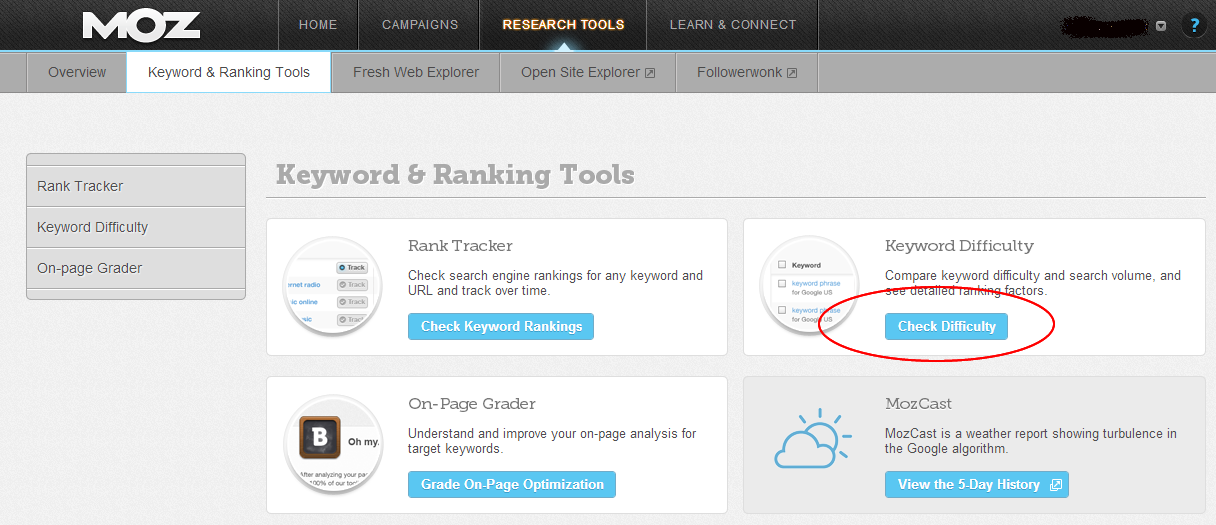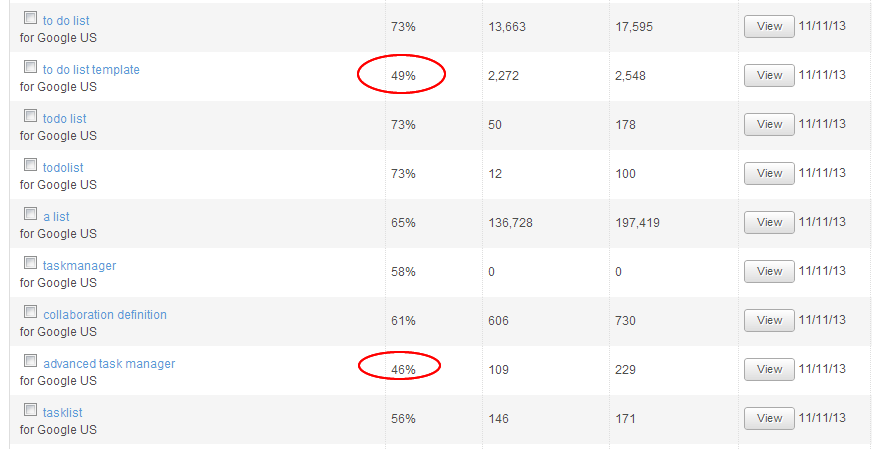This article shows you:
- that you can apply SEO without too much SEO know-how
- a set of actionable SEO steps that you can apply to your content
If you’re building a content strategy for your startup, you’ll have heard and read over and over how important and strategic SEO is. You could read the MOZ beginner’s SEO guide followed by the more advanced Quicksprout SEO guide. But if you don’t have the time and if all you want are some actionable SEO steps, then you’ve come to the right place.
Can I skip the SEO?
It would be great if creating awesome content was enough to attract quality visitors to your website. Useful and interesting advice, stellar imagery and quality links to vital resources - surely that’s enough? The thing is, loads of people have good advice to offer, or are great hustlers with their mediocre how-to guides. And a lot of people just plain write badly, despite having great insights to offer.
Competing with well established blogs and influential thought leaders is no easy task. They have built a loyal following, have on-hand readers to help promote their content and are able to churn more content per day that you do. That’s where SEO comes in. Search engines still have “free slots” - sweet spots where you can still get attention even though you’re only starting to build your blog. I want to share with you some very basic tips that we have used successfully even though we’re on an extremely competitive playing field. Most SEO experts would probably advise that these are not enough. Maybe it’s luck but they’ve worked for us. If you want more in-depth techniques check out Chapter 6 of the Quicksprout guide.
Your goals with this guide on actionable SEO steps:
- 1: Create a high-ranking article title in Google (steps 1 - 6)
- 2: Create an attractive article title to get clicks (step 7)
Step 1: Google Keyword Search - Finding the Golden Nugget
The name of the game is to rank highly for a word/phrase that people often search for but that few people are competing on. Think of it like a recipe - don’t compete with recipes for traditional spaghetti bolognese. Compete with a recipe for bolognese with some weird ingredient that people are searching for. Spaghetti bolognese with chicken? Nice!
Get a Google Adwords account - it won’t cost you a dime. Then, make a list of words and phrases relevant to the text you intend on publishing. Add all of these to the keyword search box (separated by commas) and hit enter. Switch from “ad group ideas” to “keyword ideas”.
What you are looking for are words with a high search volume per month. Your goal will be to grab those thousands of people. IMPORTANT: Forget the competition level at this point - this is irrelevant in Google Adwords as it is tailored for Adwords campaigns more than for organic search keyword competition.
After you have made a list of keywords with high search volume (we choose to go with about 1,000 + but it’s up to you), go to the Moz keyword difficulty tool. F6S often has offers for Moz but typically it’s gonna cost you $100 per month.
Collect the phrases with the lowest percentage of difficulty possible. This can be challenging if the topic you are writing about is not very unique.
Next, it’s back to Google. Try each phrase/keyword you have collected in the search engine using quote marks to search for that exact phrase. Choose the phrase with the least search results.
It is usually a long task, but the return on using the right keyword is thousands of organic visitors per month. Check out our full keyword research guide here if you want more!
Step 2: Check the Popularity of the Keyword
Whether your tactic is to jump on current news or create long-term useful content, it is always important to see how the expressions you choose are trending. Use Google Trends to see if the interest is generally high, and if it is trending down. If it is going down, the chances are that it won’t be a good long-term tactic to use this keyword. A high/stable or low/climbing keyword will be more reliable as a future traffic-diverting choice.
Another way of investigating popularity is to check if the keyword or expression is trending on Twitter. Hashtagify provides this service. You’ll be able to use this work later when tagging and posting your content around the web. Choose two/max. three tags per posting, and vary them the second time you share it so a larger audience is exposed to the post.
…or try Hashtags.org
If you want a thorough guide to how to use hashtags, check out this article on researching and applying tags and hashtags.
Step 3: Where to Include the Keyword
-
Use your keyword/EXACT phrase in the article title, in the first paragraph two or three times, and wherever else in the article you can use it without it sounding out-of-place. It takes some inventive phrasing and editing as the text still has to flow.
-
Next, use this keyword/EXACT phrase in all of the image titles and descriptions, and in the alt-title (don’t forget to use hyphens between words, and NO spaces).
-
Also place it exactly as it is in the meta descriptions and meta tags.
Here’s the basic checklist we use for every blog article for you to follow!
What is also fantastic when you are completing a blog post is to have the Yoast SEO plugin installed. If the article is not SEO-optimized, the light will appear red or yellow. A green light indicates good SEO. Under the blog post, fill in all the fields according to the instructions and you should do just fine.
Step 4: Read the page as the bots would
Check your page in www.seo-browser.com to see how it reads to the crawlers. Are you seeing you key expression in there? At the top? Multiple times? Ok good.
Step 5: Push Google indexing
Submit the URL to Google Webmaster tools
Step 6: Externally Improve your SEO
Social media shares improve the relevance of your text to the given search terms. Google’s plans are to base it’s results on democratization: what people rate as the “most relevant” through liking, referring and recommending will be top of the list. So nag your friends, get it out on your network, convince people to add to this part of the SEO to-do list.
Getting backlinks naturally (i.e. people voluntarily link back to your content or website) will help you rank higher. The more backlinks, the higher you will appear in Google search. Backlinks can be created by you on the places your competitors are, through blog commenting, forum discussions and guest blogging. However, this should be approached with caution. Any interpretation of black-hat techniques will lead to search engine penalties.
Step 7: The Article Title
Despite all the work you just did, there is a final step you have to wrestle with that is often the hardest step of all - the title of the article. When you have your golden nugget SEO keyword/phrase, you’re gonna have to bend it into a catchy title with some of the following tricks:
- use negative words
- use (big) numbers
- how to
- use one of these: surprising, history, science, huge, big, critical, hacks, smart (see the full explanation here on the Buffer blog)
- simple/fast guides
- use big brand names
Latest posts by David Arnoux (see all)
- The AHA moment - How We Avoided Losing Visitors After The First Visit - March 6, 2015
- Content Marketing For Startups: Our Story - February 2, 2015
- A Startup Directory (or 33) You Probably Didn’t Know You Should Be Listed On - January 21, 2015





